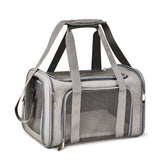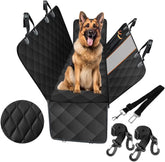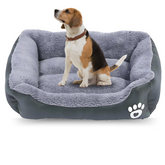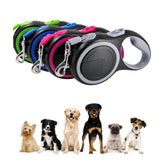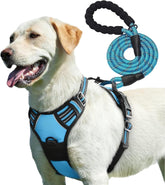Watching your dog having fun is so soothing until they start running across the street. It’s that moment when you regret not considering off leash dog training for your pet.
Well, training is important, but also the equipment matters. You should consider a retractable dog leash so that you can keep control of your dog and not watch your overexcited Golden Retriever getting into a dog fight.
In this blog, you will explore dog recall training tips and learn the basics of off leash dog training to keep your dog safe while he is having fun.
Why Off-Leash Training is Important
Well, if you have made up your mind to learn dog recall training tips, understand it’s not something to flex in front of your friends. It is to create a strong bond between you and your dog. Think of it as an exercise, where you teach your dog to trust you that you will have their back. Once trust is formed, your dog will listen to you even when he is off to catch a squirrel or a random tennis ball.
Off-leash training includes adding equipment like a heavy duty retractable leash to the training. Since you’re training your dog to do something new and it will take time, until then, this leash will let you have a grip on your dog and make it challenging for your dog to get off it.
Steps to Follow for Off-Leash Training
1. Start with Recall Training
It’s the most important step when you are starting off-leash training. First thing a pet owner wants is that their pets understand the word “No” and listen to their “come back here” command that can literally save a dog’s life in an emergency.
2. Dog Recall Training Tips:
Let us now explore the tips that can help with recall training. Firstly, find a quiet or enclosed space so he doesn’t find a way to run away. Next, keep his favourite treat or toy with you so he is encouraged to come back to you.
Every time you want him to return, say the word “come” or “get back here”, or something you think is short. If he listens to you, then reward him with a treat or “good boy/girl” compliment. Repeat this process often and keep increasing the distance between you and your dog.
3. Use the Right Gear
- Heavy Duty Retractable Leash: While you’re on a practice period with your dog and can’t let him off completely on the street, a retractable dog leash can be a good partner for you. It allows your dog some freedom while giving you the control to watch his actions. It keeps your overexcited dog under control as it can handle all the pulls he will be making while watching a newbie dog neighbor or watching your kids coming back home without breaking.
- Adjustable Pet Collars : Pet collars are an important gear, and you can’t take any risk with them. Especially, if you’re in recall training, then it’s an integral part of the training. Adjustable pet collars are perfect because you can adjust them according to your pet’s neck, and you can also attach a tag with the name and address, in case your dog decides to have a lost and found trip in the city.
4. Safety Tips to Consider
You aren't just preparing for freedom; you're preparing for safety. Here are a few suggestions to keep your dog safe while enjoying an off-leash experience:
5. The Magic of the Retractable Dog Leash
As already mentioned, utilizing a retractable dog leash is a perfect starter option. It provides a significant amount of freedom compared to a typical leash, while still not letting them have total freedom. Having a heavy-duty leash is an even more important factor if you have a dog that pulls or is a larger breed. You don't want it to be flimsy in your hands when your dog decides to chase after that squirrel.
6. Collars and Tags: Keeping It Safe
It's simple to overlook the need for a collar until you find out how much you need it. A durable, adjustable collar with an ID tag (microchip is better!) is a ticket home for your dog! If they run away or become lost, a collar will help.
Troubleshooting Common Off-Leash Issues
Here are some common challenges you can run into when making the transition to off-leash:
- Distraction: There will be days that your dog has an easy time getting distracted and appears not to listen at all. Don't stress! In cases like these, you can practice in a low-distraction environment until your dog improves at paying attention to you outside of distractions.
- Fearful/Anxious: If your dog is fearful or anxious in novel environments, it is highly unlikely they will want to run free in this instance. In this case, slow down. There is a good chance that starting with smaller, more contained sessions will be beneficial before adding additional novel environments when your dog is feeling confident.
Also Read : Why Do Dogs Bring Their Toys to You?
Final Thoughts
Off leash dog training may look challenging, but in the end, you will be amazed to see the results it will show. Your dog will have the freedom, but you can still have more control and have peace of mind. By mastering the recall training and relying on the right gear, you both can enjoy the time outdoors.
However, one thing to note is that it doesn't have anything to do with controlling or restraining your dog; it’s just to let him know you’re his safe space. Your dog’s safety should be your No.1 priority.
